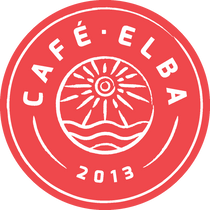
I haven’t seen a film that better captures a day in the life of a coffee picker, than Ixcanul does. Ixcanul premiered in 2015, the debut film from Guatemalan director Jayro Bustamante. It is centered around Maria, a young Kaqchikel Mayan woman, whose world revolves around the coffee bean, and the volcano where it is grown in the Guatemalan highlands (Ixcanul is the Kaqchikel word for ‘Volcano’).
To be clear, this movie is not about coffee-picking. Working and living on the coffee plantation serves as the ‘stage’ whereupon the story of Maria unfolds...yet this story would not exist or be as fully realized without the backdrop of a poor indigenous coffee-picking community.
I will not reveal any story elements...I’ll leave that to you, the viewer to discover. I watched this film with my mom, Elba, and she immediately pointed out all the little details in the film that she herself lived back in El Salvador.

Their labor intensive days begin very early and include a lot of traveling by foot, filling up large jute bags full of coffee cherries, and carrying those bags back to be weighed. In one scene, which hardly affected the plot of the narrative, a young man hauls his bag of coffee cherries to be weighed by the finca patron, or the overseer of the plantation. Coffee pickers are paid according to how much coffee cherries they pick off of trees, so obviously, the more a bag weighs, the better the resultant payment. In this scene, the plantation foreman indicates that the young man’s bag is wet, thereby making it weigh more. He instructs the man to dry out the bag, which could take days...delaying the man of a full day’s wage. This one-minute scene is demonstrative of the feeble position that coffee pickers hold in the labor force.
Other little details that the film shows are sprinkled throughout. We see a family eat a typical daily meal of just plain frijoles (beans) with a tortilla. Maria’s living situation is just as precarious. Like many coffee-pickers, they’re seasonal workers who often live on the plantation in small huts without electricity or running water. (see blog The Coffee Pickers! Pt. 2: A Day In The Life for more details on a day in the life of a coffee picker.)

Mayan ‘traje’ (traditional dress) in Guatemala, from Elba’s Guatemala Trip
The relationship between indigenous peoples and coffee-picking is present throughout this film. Most of the spoken dialogue is in Kaqchikel, with very little spoken Spanish. Elba especially enjoyed seeing the indigenous dress worn by the Kaqchikel women, since she had just come back from Guatemala earlier this year to visit coffee plantations and coffee-pickers in Huehuetenango and Antigua. She remembers all the vivid colors (see image below) of the traje.
I highly recommend this powerful film. It is truly a landmark in the still-nascent Central American film industry. You can purchase this film online to support the art! (I found it on Amazon)
- Written by Coffee Mike
